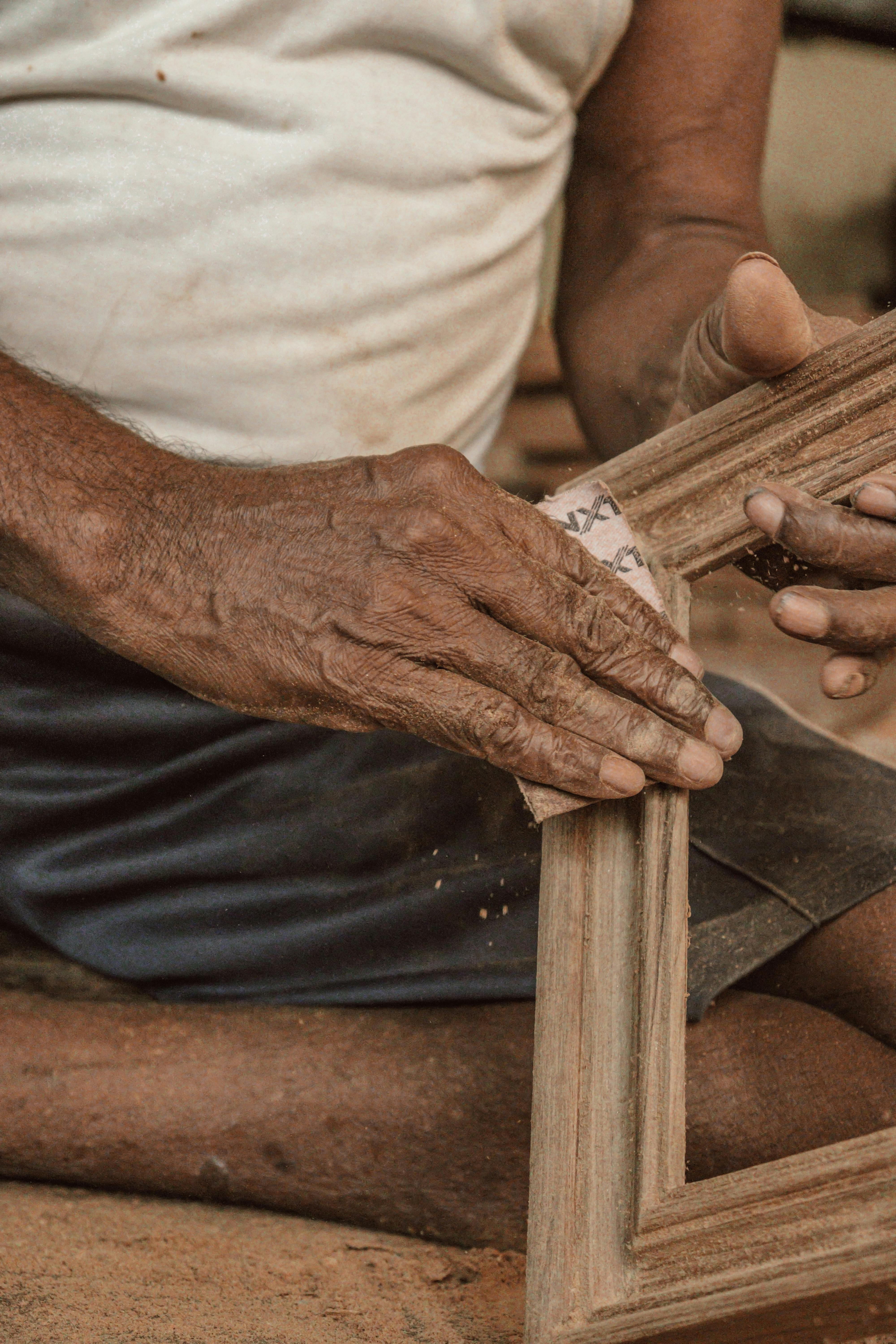As we age, it becomes increasingly important to prioritize our overall well-being and maintain an active lifestyle. That’s where yoga comes in. In this article, we will explore the benefits of yoga for seniors and how it can help us age gracefully. Discover how this ancient practice can not only improve our physical strength and flexibility but also promote mental clarity and inner peace. So, if you’re ready to embark on a gentle and transformative journey towards holistic well-being, join us as we delve into the world of yoga for seniors.

Benefits of Yoga for Seniors
As we age, it’s important to find ways to stay active and maintain our physical and mental well-being. Yoga is a fantastic practice for seniors, as it offers numerous benefits that can help improve our overall quality of life. Let’s dive into some of the key advantages of practicing yoga as we age.
Improves flexibility and mobility
One of the most noticeable benefits of practicing yoga is the improvement in flexibility and mobility. As we get older, our joints can become stiff, and our muscles may lose their elasticity. Yoga poses gently stretch and lengthen our muscles, helping to increase our range of motion. This improved flexibility can make everyday activities much easier and reduce the risk of injury.
Builds strength and balance
Maintaining strength and balance is crucial for seniors to prevent falls and maintain independence. Yoga poses, such as standing balance poses like Tree pose, help to strengthen our muscles, particularly in our legs and core. Strong muscles and improved balance contribute to better stability and reduced risk of falls.
Reduces joint pain and stiffness
Many seniors suffer from joint pain and stiffness caused by conditions such as arthritis. Regular yoga practice can help alleviate these issues by increasing blood flow to the joints and promoting gentle movement. Poses like Bridge pose can be particularly beneficial for strengthening the muscles supporting the joints and relieving pain.
Promotes better sleep
Getting a good night’s sleep becomes more challenging as we age, and insomnia can have a significant impact on our overall well-being. Yoga offers techniques that can help promote better sleep. Practices like deep belly breathing and restorative poses, such as Child’s pose, can induce a state of relaxation and calmness, making it easier to drift off to sleep.
Enhances mental clarity and focus
As we age, it’s natural for our cognitive abilities to decline slightly. However, practicing yoga can help maintain mental clarity and focus. Mindful movement, a key aspect of yoga, encourages us to be fully present in the moment, enhancing our concentration and reducing mental distractions. Additionally, incorporating meditation and breathwork into our yoga practice can have a profound impact on our mental well-being.
Precautions and Modifications for Seniors
While yoga offers numerous benefits for seniors, it’s essential to practice safely and make necessary modifications to accommodate individual needs and limitations. Here are some precautions and modifications to keep in mind:
Consulting a healthcare professional
Before starting a new exercise regimen, it’s crucial to consult with a healthcare professional, particularly if you have any underlying health conditions. They can provide valuable guidance on whether yoga is a suitable practice for you and offer specific recommendations or restrictions.
Choosing the right yoga class and instructor
When selecting a yoga class, look for those specifically designed for seniors or those with gentle, modified practices. These classes often take into account the unique needs of aging bodies and provide appropriate modifications for different poses. It’s also essential to choose an instructor who has experience working with seniors and can provide guidance on proper alignment and modifications.
Using props and modifications
Props, such as blocks, straps, and blankets, can be incredibly helpful for seniors in achieving proper alignment and making poses more accessible. Using props allows for modifications that cater to individual abilities and physical limitations. For example, a chair can be used for support during balancing poses like Tree pose.
Avoiding risky poses
Certain yoga poses may not be suitable for seniors due to their potential for strain or injury. Poses that involve putting excessive pressure on the joints or require significant flexibility should be approached with caution or avoided altogether. It’s important to listen to your body and modify or skip poses that don’t feel comfortable or safe.

Recommended Yoga Poses for Seniors
Yoga poses can be modified to accommodate seniors’ needs and abilities while still providing immense benefits. Here are some recommended poses that are safe and effective for seniors:
Chair pose
Chair pose is an excellent pose for building leg strength and improving balance. It involves standing with feet hip-width apart, bending the knees, and pretending to sit back into an imaginary chair. This pose can be done with the support of a chair against a wall, if needed.
Mountain pose
Mountain pose is a simple yet foundational pose that helps improve posture and balance. Stand tall with feet hip-width apart, relax the arms by the sides, and engage the core muscles. This pose helps to cultivate a sense of stability and grounding.
Tree pose
Tree pose is a fantastic balancing pose that strengthens the legs and improves focus and concentration. Start by standing tall, shift the weight onto one leg, and place the sole of the other foot on the inner thigh or calf of the standing leg. If balancing is challenging, the foot can be placed on the ankle or the toes can touch the ground for support.
Cat-Cow pose
Cat-Cow pose is a gentle flow that helps improve spinal flexibility and relieve back pain. Start on all fours with hands directly under shoulders and knees under hips. Inhale, arch the back, lifting the chest and tailbone, and look up (Cow pose). Exhale, round the spine, tuck the chin, and draw the belly button towards the spine (Cat pose). Repeat the flow several times, coordinating breath with movement.
Bridge pose
Bridge pose is a great way to strengthen the glutes, hamstrings, and lower back while gently opening the chest. Lie on your back with knees bent and feet flat on the floor, hip-width apart. Engage the glutes and core, press into the feet, and lift the hips toward the ceiling. Keep the shoulders relaxed and avoid straining the neck.
Breathing Techniques for Seniors
Breathwork is an essential aspect of yoga that can have profound effects on our physical and mental well-being. Here are some breathing techniques that are particularly beneficial for seniors:
Deep belly breathing
Deep belly breathing, also known as diaphragmatic breathing, involves consciously breathing deeply into the abdomen rather than shallowly into the chest. This technique helps to engage the diaphragm fully, reduce stress, and promote relaxation. Lie down comfortably, place one hand on the belly, and take slow, deep breaths, feeling the belly rise and fall with each inhalation and exhalation.
Alternate nostril breathing
Alternate nostril breathing is a balancing and calming breath technique that helps to harmonize the left and right sides of the brain. Sitting comfortably, use the right thumb to close the right nostril and inhale through the left nostril for a count of four. Then, close the left nostril with the right ring finger and exhale through the right nostril for a count of four. Repeat this alternating pattern for several rounds.
Three-part breath
Three-part breath, also known as complete yogic breath, involves consciously breathing into three distinct areas of the lungs—the belly, ribs, and chest. This technique helps to increase lung capacity, oxygenate the body, and promote a sense of calm. Start by placing one hand on the belly and the other on the chest. Inhale slowly through the nose, feeling the belly rise, then expand the ribs, and finally the chest. Exhale slowly, allowing each area to release in reverse order.
Lion’s breath
Lion’s breath is an energizing and rejuvenating breath technique that helps release tension and boost mood. Sitting comfortably, take a deep inhalation through the nose, open the mouth wide, stick out the tongue, and exhale forcefully while making a “ha” sound. Repeat this several times, imagining any stress or tension leaving the body with each exhale.

Creating a Safe and Comfortable Practice Space
Creating a safe and comfortable space for practicing yoga is essential for seniors. Here are some tips to help set up a conducive environment:
Selecting a non-slip surface
Choose a practice area with a non-slip surface to reduce the risk of falls or injuries. Opt for a yoga mat or a non-skid rug that provides stability and support during poses. Consider using additional grip aids, such as non-slip socks or gloves, if necessary.
Using supportive props
Supportive props like blankets, bolsters, cushions, or blocks can significantly enhance comfort and ease during yoga practice. They can be used to provide extra padding, support joint integrity, or modify poses to suit individual needs. Experiment with different props to find what works best for you.
Ensuring proper lighting and ventilation
Having adequate lighting is essential to ensure proper visibility and reduce the risk of accidents. Choose a well-lit area or consider using additional lighting sources, like lamps or candles, to create a soothing ambiance. Ensuring good ventilation is also important to maintain fresh air circulation throughout the practice space.
Creating a peaceful atmosphere
Set the mood for your yoga practice by creating a peaceful and calming atmosphere. Consider playing soothing music, incorporating aromatherapy with essential oils, or decorating the space with items that bring joy and tranquility. Make your practice space a sanctuary that promotes relaxation and positive energy.
Incorporating Mindfulness and Meditation
Mindfulness and meditation are powerful practices that complement the physical aspects of yoga. Here are some ways to incorporate mindfulness and meditation into your yoga practice:
Mindful movement in yoga
While practicing yoga poses, bring awareness to each movement and the sensations in your body. Pay attention to the alignment of your body, the quality of your breath, and the present moment. Mindful movement allows you to fully experience each pose, enhance body awareness, and cultivate mindfulness.
Guided meditations for relaxation
After completing your physical yoga practice, take some time to engage in guided meditations specifically designed for relaxation and stress relief. These meditations often include visualization techniques, body scans, or breathing exercises that help calm the mind and promote a sense of deep relaxation.
Mantra chanting for mental clarity
Chanting mantras can be a powerful way to focus the mind, enhance mental clarity, and deepen your spiritual connection. Choose a mantra that resonates with you, whether it’s a Sanskrit chant or a simple affirmation, and repeat it silently or aloud during your yoga practice. The rhythmic repetition of mantras can help quiet the mind and bring about a sense of peace.
Joining Senior-Friendly Yoga Programs
Joining senior-friendly yoga programs provides the opportunity to practice yoga in a supportive and inclusive environment. Here are some options to consider:
Local community centers and senior centers
Many local community centers and senior centers offer yoga classes specifically tailored for seniors. These classes are often taught by experienced instructors who understand the unique needs of older adults. Joining these classes can provide a sense of community and support while benefiting from personalized instruction.
Specialized yoga studios for seniors
Some yoga studios specialize in offering classes exclusively for seniors. These studios may offer a range of classes, from gentle and restorative yoga to more active practices tailored to older adults. Exploring specialized yoga studios can provide a dedicated space that caters specifically to the needs and preferences of seniors.
Online yoga classes and resources
For those who prefer to practice at home or have limited access to in-person classes, online yoga classes and resources are a wonderful option. Many online platforms offer senior-friendly yoga classes that can be accessed from the comfort of your own home. These classes can be done at your own pace and provide flexibility in terms of scheduling.
Building a Consistent Yoga Practice
Building a consistent yoga practice is key to reaping the full benefits of this ancient practice. Here are some tips to help you establish and maintain a regular yoga routine:
Setting realistic goals
Start by setting realistic goals for yourself based on your current fitness level and schedule. Consider how many times per week you can comfortably commit to practicing yoga and how long each session will be. Start with small, achievable goals and gradually increase the frequency and duration as you build strength and confidence.
Establishing a regular routine
Consistency is key when it comes to yoga. It’s important to establish a regular routine that works for you and stick to it. Find a time of day that works best for your schedule and make it a non-negotiable part of your daily or weekly routine. Treating yoga as a priority will help you stay on track and make it a lifelong practice.
Staying motivated and accountable
Finding motivation and accountability can greatly help in maintaining a consistent yoga practice. Joining a class or enlisting a yoga buddy can provide the necessary motivation and support to keep you committed. Additionally, tracking your progress, setting milestones, or rewarding yourself for reaching goals can serve as positive reinforcement and keep you engaged.
FAQs about Yoga for Seniors
As with any practice, there may be questions and concerns about yoga for seniors. Here are some frequently asked questions that may help address common doubts:
Is yoga safe for seniors with health conditions?
Yoga can generally be safe for seniors with health conditions, but it’s crucial to consult with a healthcare professional before starting a practice. They can provide guidance on any modifications or restrictions based on individual health needs. In some cases, certain poses or practices may need to be avoided or modified.
How often should seniors practice yoga?
The frequency of yoga practice for seniors can vary depending on individual abilities and preferences. Starting with two to three sessions per week is a good goal, but even practicing once a week can yield benefits. The key is to listen to your body and gradually increase the frequency and duration of practice as you feel comfortable.
Can yoga help with age-related issues like osteoporosis and arthritis?
Yoga can be beneficial for managing age-related issues like osteoporosis and arthritis. Certain poses can help improve bone density, strengthen muscles supporting the joints, and relieve pain and stiffness. However, it’s crucial to practice with caution and make necessary modifications or seek guidance from an experienced instructor.
Conclusion
Yoga offers numerous benefits for seniors, both physically and mentally. The practice can improve flexibility, strength, balance, joint health, sleep quality, and mental clarity. By following precautions, practicing recommended poses, incorporating breathwork and mindfulness, and joining senior-friendly programs, seniors can safely and effectively reap the benefits of yoga. Building a consistent yoga practice can lead to a better quality of life and support aging gracefully. So, let’s roll out our mats, breathe deeply, and embark on a transformative journey of well-being through the gentle practice of yoga. Namaste.
